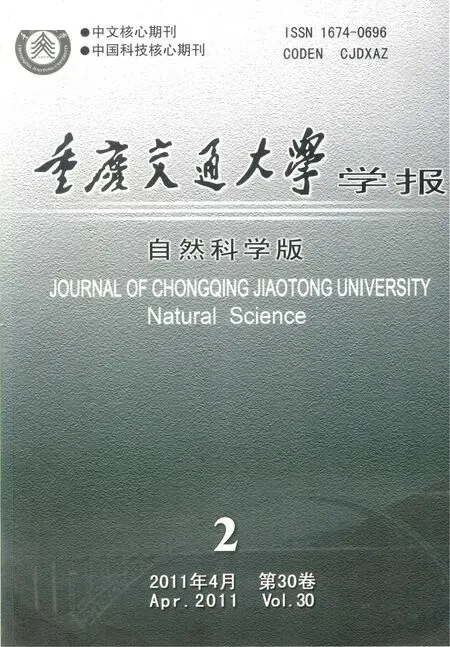Underground Technology and Rock Engineering Program in Nanyang Technological University,Singapore
Z.Y.Zhao,Y.X.Zhou,X.M.An
(1.School of Civil& Environmental Engineering,Nanyang Technological University,Singapore 639798;2.Defence Science& Technology Agency,Singapore 639798)
1 Introduction
Underground Technology and Rock Engineering(UTRE)program is a long term joint research program between Nanyang Technological University(NTU)and Defence Science and Technology Agency(DSTA),Singapore.The first phase of five years of the UTRE research program has been completed in May 2009 and it has been successfully extended to the second phase for another four years in 2009.UTRE focuses on research collaboration on issues of concern to the rock engineering and underground construction.Over the last few years,various fundamental research work has been conducted under the UTRE program,including rock and rock joint dynamic testing and modelling,wave propagation across jointed rock mass,development of numerical tools for jointed rock mass,development of tunnel fire safety assessment and evacuation tool,development of GIS-based rock engineering system.The main research work in each sub-area will be summarized respectively in the following sections.
2 Dynamic Tests of Rock and Filled Rock Joints
A proper understanding of the effects of loading rate on the mechanical properties of rock and rock joints is essential in the design of underground structures subjected to dynamic loads.Split Hopkinson pressure bar(SHPB)test is commonly used to determine the material properties in a high strain rate ranging from 101 to 103.Fig.1 shows the SHPB test equipments in our lab which is equipped with 50 mm and 75 mm in diameter pressure bars made of steel alloy,aluminium alloy,granite,high strength cement and PMMA,respectively.In the rock specimen test,a pneumatic gun fires out a projectile and it generates a nearly rectangular pulse which is shape-adjusted by a pulse shaper and acts onto the incident pressure bar and further transferred to the rock specimen[Fig.1(a)].Various SHPB tests have been conducted to granite rock specimen which were collected from the Bukit Timah formation covering about one-third on the Singapore geological map.Fig.2 shows some typical tested rock specimens under different nominal strain rate loadings.It is seen that the failure patterns of the rock specimens are significantly different under different strain rate loadings.Dynamic Brazilian splitting and spalling tests based on SHPB setup have also been performed to investigate the dynamic ten-sile strength of granite under higher strain rate,which a- gains is observed to be sensititive to strain rate.

Fig.1 SHPB test setup图1 SHPB测试
Modified SHPB tests have been conducted for filled rock joints,where a single sand or clay layer was sanwiched between two granite pressure bars and the pulse load was generated by a pendulum hammer.The tests results show that the dynamic properties of differnetly filled rock joints are differnet.The test results also demonstrated that the dynamic properties of filled rock joints are nonlinear.Water content and joint width have apparent influences on the pressure-closure relation of the filled rock joint.A three-phase medium model was proposed in describing the dynamic property of filled rock joints and an analytical study on longidudinal wave transmission normally across a three-phase rock joint was presented in Ma,Li,and Zhao[10].Parameters in the three-phase medium model were determined by a series of modified SHPB tests.Parametric studies with respect to the volume ratio of water and air,and type of filling material have been performed.The three-phase medium model was verified by comparing its predicted pressure-closure relationship with the test results in Fig.3.As shown,the threephase medium model effectively reflected the effects of joint thickness and water content.

Fig.2 Failure pattern of granite specimen under differnet strain rate loadings图2 花岗岩试样在不同应变辛载落下的破坏模式

Fig.3 Closure-pressure relationship for sand filled rock joints图3 密闭-压力关系曲线
3 Wave Propagation across Jointed Rock Mass
Rock mass usually consists of multiple,parallel planar joints,known as joint sets,which govern the mechanical behavior of the rock mass.The dynamic behavior and wave propagation across jointed rock mass are of great interest to geophysics,mining and underground constructions.A linear visco-elastic equivalent medium model and a nonlinear visco-elastic equivalent medium model have been put forward to analyze stress wave propagation in jointed rock mass.It was validated that the proposed equilibrium medium models give more reasonable results in describing wave transmission and attenuation in jointed rock mass than traditional models.A virtual wave source model was proposed to consider the wave reflections at rock joints.Moreover,wave propagation in micro-defected rock was investigated by a series of impact tests(Fig.5).A frequency-dependent viscoelastic model was proposed to describe the dynamic behavior of micro-defected rock and its effects on wave propagation.Numerical manifold method(NMM)was then used to numerically investigate the effects of micro-crack length,stiffness,density,etc.on the viscoelastic behaviorofmicro-defected rock[12].The capability of the NMM on modeling dynamic mechanical behavior of micro-defected rock was verified.

Fig.4 Viscoelastic equivalent medium model for jointed rock mass图4 节理岩体黏弹性介质模型

Fig.5 Test setup for impact test of micro-defected rock图5 微缺陷岩石的影响试验

Fig.6 Modified 3-element viscoelastic model for micro-defected rock图6 微缺陷岩石黏弹性修正模型
4 Development of Numerical Tools for Jointed Rock Mass
Amont various numerical methods,the discontinuous deformation analysis(DDA)is one of the most suitable methods to simulate deformations and stabilities of jointed rock mass.In the original DDA method,the deformability of each block is restricted by its first order displacement assumption.To overcome this limitation,it was enhanced by coupling a triangular finite element mesh into each DDA block,with the method termed as nodal-based DDA(NDDA).Later,the NDDA was further improved by incorporating a node splitting algorithm to realize the fragmentation of an intact block.Various typical examples have been conducated to validate the accuacy and efficency of the NDDA in modeling wave propagation in continuous and elastic media,propagation of pre-existing cracks under uniaxial tension and compression, respectively, Brazilian test,etc..Fig.7 shows failure of a Brazilian disc predicted by the NDDA.Fig.8(a)shows failure of a Brazilian disc with an initial hole,which agrees well with the experimental result in Fig.8(b).Besides the NDDA,other theoretical developments on the DDA include:1)an accurate stress evaluation scheme based on nodal stress equilibirum;2)a new corner-corner contact algorithm;3)an efficient DDA block generation algorithm.The developed DDA code has been used to invesitgate various rock engineering problems,including:1)cavern stability analysis with/without rock bolts;2)fracture process of rock under static and dynamic loads;3)drill/blast simulations;and 4)wave propagation.A blast design is shown in Fig.9(a).The corresponding DDA model is given in Fig.9(b).The explosive was simplied by a load history curve.Parametric studies regarding to time delay and rock mass properties were carried out.Fig.9(c)shows the fracture patterns of one typical case.The results have provided a promising start on realistic blasting simulation and can be developed to support blsting design for its efficiency,e-conomy and feasibility.
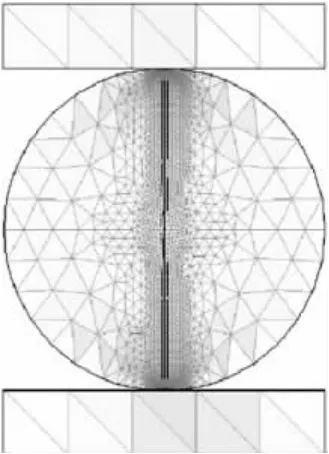
Fig.7 Failure of a Brazilian disc by NDDA图7 NDDA中失效的巴西图盘
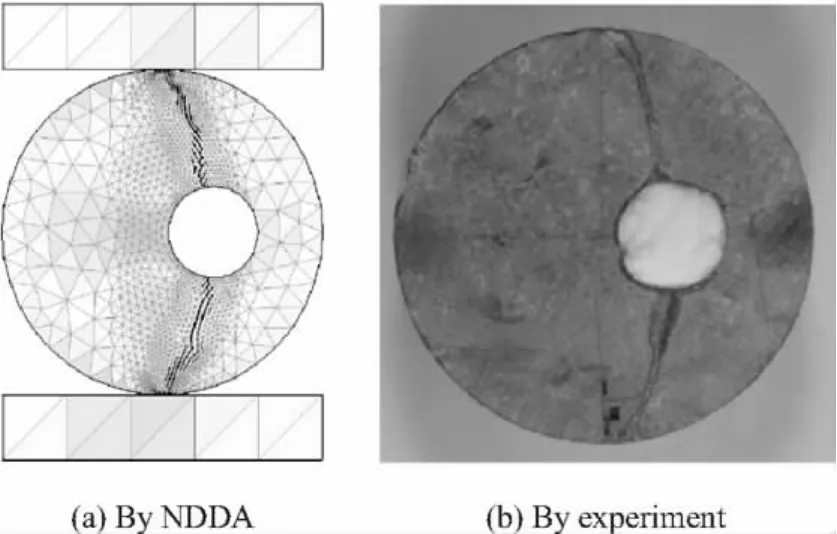
Fig.8 Failure of a Brazilian disc with an initial hole图8 失效的巴西圆盘及最初形成的孔


Fig.9 Drill and blast simulated by DDA图9 钻爆模拟中的应用
Another promising method for jointed rock mass analysis is the numerical manifold method(NMM)proposed by Shi[14].The NMM was developed based on DDA.The NMM improves the displacement/stress field in each block in the DDA by employing a set of covers.The NMM is extremely suitable for discontinuity problems becasue of its dual cover system.The 2-D NMM has been extended to simulate complex crack problems,weak discontinuity problems,rock slope failures[11],etc.Moreover,the theoretical framework of application of the 2-D NMM to some other discontinuities in solid mechanics,such as cohesive cracks,interface cracks,shear bands,dislocations,high gradient zones,etc,has been laid out in An,Ma,Cai and Zhu[1-2].Recently,the NMM has been extended to 3-D domain.The general framework of the 3-D NMM was first estabilished.A general 3-D contact algorithm was subsequently developed.The proposed 3-D NMM was proved to be accurate,efficient and stable through simulating several typical examples.The 3-D NMM was also applied to conduct stability analysis of rock slopes and tunnels.Fig.10(a)shows the initial state of a rock slope while Fig.10(b)shows the moved blocks under gravity with the friction angle set to be 12.Two types of stabilization techniques,i.e.concrete buttresses and fences barriers were investigated with their effectiveness in protecing nearby road were clearly shown in Fig.11(a)and(b),respectively.3-D NMM provides a great potential to be used for practical engineering design.

Fig.10 Failure process of a rock slope图10 岩石边坡破坏过程

Fig.11 Effectiveness of stabilisation techniques图11 稳定技术的效果
5 Fire Safety Assessment and Evacuation Tool
Studies by this group are on the development of a numerical tool to simulate the emergency evacuation from underground space.A comprehensive numerical model for evacuation modeling was proposed based on cellular automaton(CA).This CA model provides a framework for modelers to incorporate various features such as tenability condition,visibility range and multivelocity etc.into the simulation of evacuation.Basically,the model uses two factors,viz.spatial distance and occupant density to calculate the danger grade of CA cells.In order to make the simulation more reasonable,four types of human behavior were taken into account in the model.They are:1)Familiarity effect.Group members will help one another in emergency because people are likely to behave in a benevolent way when they know each other,especially when they are from the same family or they travel together in the same group.2)Unadventurous effect.Most people will try to exit through the same route they entered a building because occupants generally do not want to use a new exit they have no experience with.3)Inertial effect.People are inertial creatures because they do not like to stop what they are doing.Once they move towards a certain exit,they usually continue heading the same direction.4)Flow with the stream.The movement of an individual occupant will conform to the dominant direction of majority of surrounding occupants.Besides human behavior,tenability conditions are also incorporated into the proposed CA model to consider the effect of smoke.The movement speed of evacuees is an important factor in evacuation modelling since it has direct effect on evacuation time.Therefore,a series of experimental tests were conducted to investigate the speed of human’s movement.Fig.12 and Fig.13 show the evacuation from a multi-storey building and a tunnel,respectively.

Fig.12 Evacuation from a multi-storey building图12 从多层建筑物的疏散示意
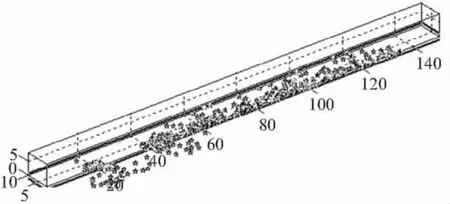
Fig.13 Evacuation from a tunnel图13 从隧道撤离示意
6 Instrumentations and Monitoring
Traditional monitoring of underground structures is mainly conducted manually and not in a continuous manner.This group targets to develop a continuous and distributed monitoring system which employs Brillouin Time Domain Reflectometry(BOTDR)fibre optic sensors.Optical fiber is capable of capturing accurate information of a wide range of parameters such as temperature,strain,pressure,electrical voltage and even deformation in the in-service structure.Due to its fragility,materials of the optical fiber used,packaging technique as well as installation method are of great importance to achieve high reliability and accuracy in the monitoring results and data analysis.Investigation on various optic fibers,sensor installation method and preparation of site trial test has been carried out.A customized BOTDR sensor reinforced with stainless steel tube was proposed to the supplier and calibrated with the newly designed clamps for installation.Good accuracy of the proposed BOTDR sensor was observed.Moreover,Fiber Bragg Grating(FBG)sensors were calibrated using the proposed installation method.In order to test survivalability of the sensors against shotcrete spray pressure,water spraying test was carried out on both FBG and BOTDR sensors.Results showed that these sensors functioned well during the tests.For the trial test in a tunnel,the BOTDR and FBG sensors were installed on tunnel surface and were embedded in shotcrete to protect them from the blast and other excavation activities.Monitoring of the tunnel was just started and results are awaited.Development of operation software which controls the data acquisition,processing,merging and generation of data analysis reports is also under study.
7 GIS-based Digital Rock Engineering System
This group concentrates its effort to develop a Digital Rock Engineering system,which comprise a 3-D Geological Information System(3-D GIS),a 3-D Engineering Construction System(3-D ECS),a 3-D Environmental Analyzing System(3-D EAS)and a 3-D Modelling Sytem(3-DMS).The four parts of the system are interconnected as illustrated in Fig.15.
A 3-D GIS software called 3-D Rock has been developed incorporating 3-D data models and relational database for borehole information.A digital elevation model(DEM)in 3-D of the whole of Singapore’s main island and the surrounding seabed has been created.Building on the top of the DEM is the 3-D surface geological model of Singapore(Fig.16)which established the framework to model subsurface geological structure.Subsurface modeling and analysis(Fig.16)and multilayered surfaces and cavern(Fig.17)have been successfully implemented in 3-D Rock.The integration of the four individual parts is underway.

Fig.14 Digital rock engineering system图14 数字岩石工程系统
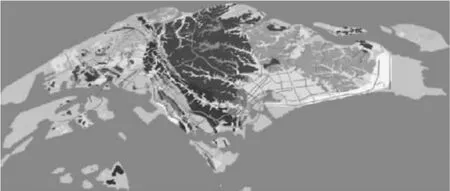
Fig.15 3-D surface geological map of Singapore图15 新加坡三维表面地质图
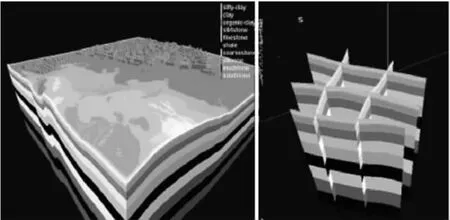
Fig.16 Subsurface modeling and analysis图16 地表岩石发建模及分析
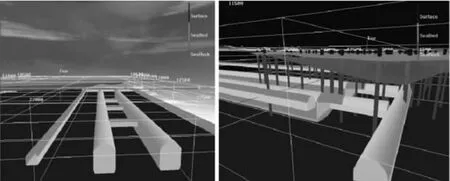
Fig.17 Modelling of multi-layered surfaces and cavern图17 多层的曲线及岩洞模型
8 Conclusions
Space is one of the key constraints to Singapore’s economic and social development.The use of underground space offers a potential solution to meet the demand for spaces.The UTRE team is in the process to develop an integrated rock engineering system to help the development of underground space in Singapore.

Fig.18 Sketch of Yurong Rock Caverns图18 裕廊岩洞略图

Fig.19 Hydraulic conductivity distribution图19 液压电导率分布
The UTRE team members have actively participated various rock engineering projects in Singapore,including the Jurong Rock Cavern(JRC)project,South-East Asia’s first underground rock cavern storage facility.Phase one of the JRC project will provide 1.47 million cubic meters of storage for crude oil,naphtha,condensates and gas oil.The JRC caverns are located beneath the sea bottom as shown in Fig.18.Each cavern is 27 m high and about 300 m long and 20 m wide and the crowns of caverns are located at about 100 m below the sea bottom.Fig.19 shows a hydraulic conductivity distribution model based on the borehole data and neural network.
Acknowledgements:The authors would like to express their gratitude to the Defence Science and Technology Agency(DSTA),Singapore,for their financial support to the UTRE program.We also would like to thank the Protective Technology Research Centre(PTRC),NTU,for their support.
[1] An X M,Ma G W,Cai Y C,et al.A new way to treat material discontinuities in the numerical manifold method[J].Computer Methods in Applied Mechanics and Engineering,2011,200(47/48):3296-3308.
[2] An X M,Ma G W,Cai Y C,et al.Arbitrary discontinuities in the numerical manifold method[J].Int.J.Comput.Methods,2011,8(2):315-347.
[3] Bao H R.Nodal-based Discontinuous Deformation Analysis[D].Singapore:Nanyang Technolgoical University,2010.
[4] Bao H R,Zhao Z Y.An alternative scheme for the corner-corner contact in the two-dimensional discontinuous deformation analysis[J].Adv.Eng.Softw.,2010,41:206 -212.
[5] Fan L F.Viscoelastic Behavior of Rock Mass and Its Effects on Stress Wave Propagation[D].Singapore:Nanyang Technolgoical University,2011.
[6] Gu J,Zhao Z Y.Considerations of the discontinuous deformation analysis on wave propagation[J].Int.J.Numer.Anal.Meth.Geomech,2009,33(12):1449 -1465.
[6] He L.Three Dimensional Numerical Manifold Method and Rock Engineering Applications[D].Singapore:Nanyang Technolgoical University,2010.
[7] Li J C,Ma G W,Zhao J.An equivalent viscoelastic model for rock mass with parallel joints[J].J.Geophys.Res.,2010,115:3305 -3315.
[8] Li J C,Ma G W.Experimental study on stress wave propagation across filling rock joint[J].Int.J.Rock Mech.Min.,2009,46(3):471-478.
[9] Ma G W,An X M,Zhang H H,et al.Modeling complex crack problems using the numerical manifold method[J].Int.J.Fracture,2009,156:21 -35.
[10] Ma G W,Li J C,Zhao J.Three-phase medium model for filled rock joint and interaction with stress waves[J].Int.J.Numer.Anal.Meth.Geomech.,2011,35(1):97 -110.
[11] Ning Y J,An X M,Ma G W.Footwall slope stability analysis with the numerical manifold method[J].Int.J.Rock Mech.Min,DOI:10.1016/j.ijrmms.2011.06.011.
[12] Ren F,Fan L F,Ma G W.Simulation of viscoelastic behavior of defected rock by using numerical manifold method[J].Front.Archit.Civ.Eng.China,2011,5(2):199 -207.
[13] Shi G H.Discontinuous Deformation Analysis:A New Numerical Model for the Static and Dynamics of Block Systems[D].USA:Berkeley,1988.
[14] Shi G H.Manifold Method of Material Analysis[C]//Minneapolis,Minnesota:Trans.9th Army Conf.on Applied Mathematics and Computing,1991:57 -76.
[15] Zhao Z Y,Gu J.Stress recovery procedure for discontinuous deformation analysis[J].Adv.Eng.Softw,2009,40(1):52 -57.
[16] Zhao Z Y,Zhang Y,Bao H R.Tunnel blasting simulations by the discontinuous deformation analysis[J].Int.J.Comput.Methods,2011,8(2):277 -292.

